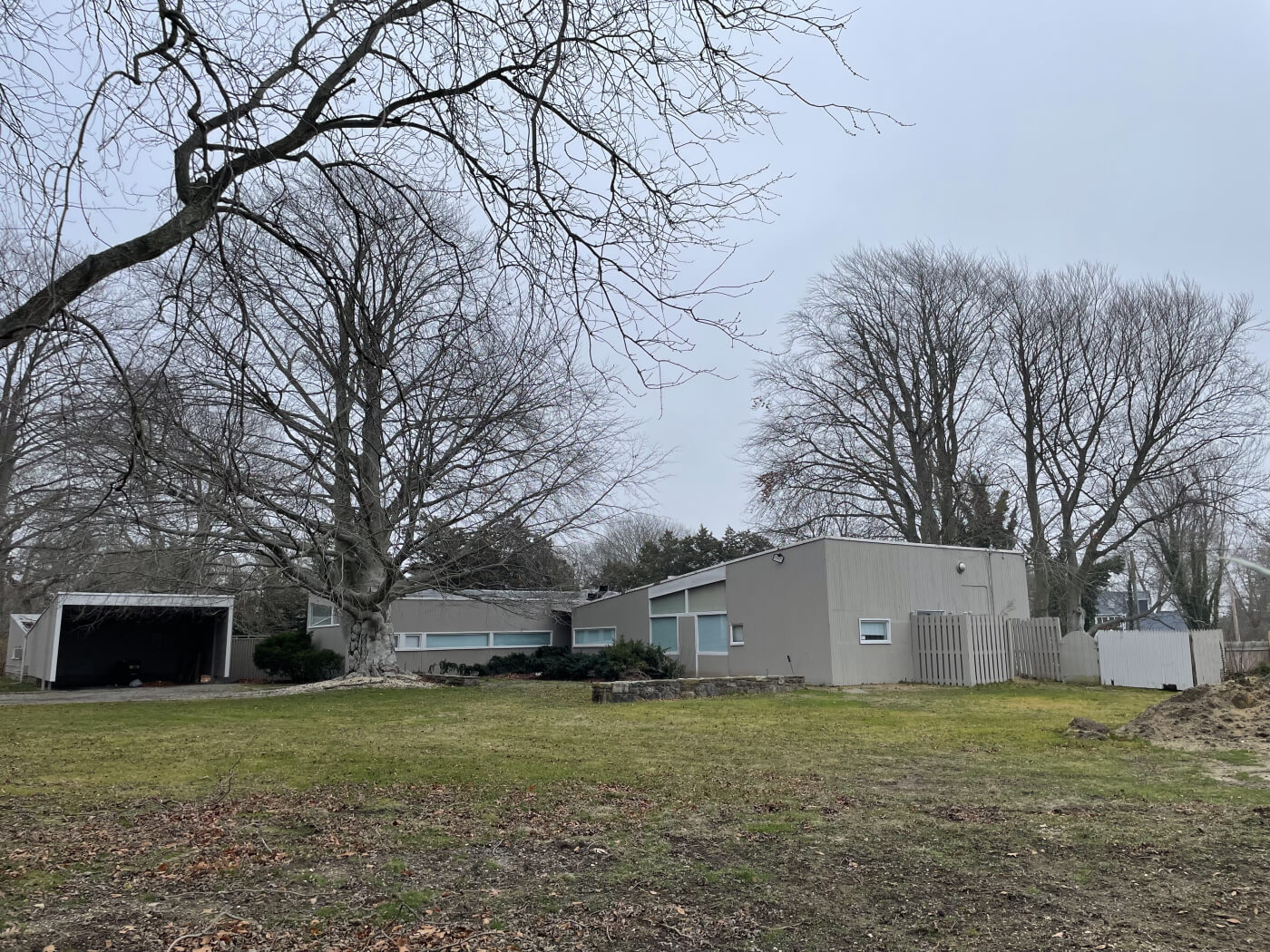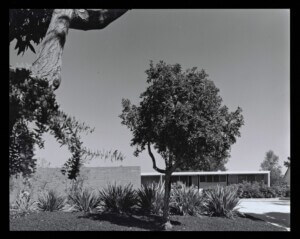In January, Docomomo US broke the news that the Geller House I, a hugely influential early residential project of Marcel Breuer in Lawrence, New York, was tragically demolished in the dead of night for a superfluous tennis court. While it is tempting to partake in the public mourning ritual of tearing one’s hair out over what a terrible loss this is for architectural history (and many have), it is in no way surprising that this house was demolished. In fact, the Geller House has been on such a predictable trajectory toward demolition since the property changed hands two years ago that grieving the loss of this structure, no matter how significant, feels performative. I think—nay, know—I’ve seen this film before, and I didn’t like the ending.
Geller House I’s predictable loss does not reflect the historic or architectural value of the home. Instead, it reflects its context. In summer 2017, I completed a survey of hundreds of modern residences designed by celebrated architects between 1930 and 1975 in Massachusetts with some examples in surrounding Northeastern states. Marcel Breuer, along with Walter Gropius, Eliot Noyes, Eleanor Raymond, John Johansen, Philip Johnson, Edward Durrell Stone, and more, designed many of the homes included in the survey. I used this survey work to inform my Masters’ thesis on the demolition of modern residential architecture across the United States and found that despite obvious architectural significance, an alarming number of these properties had been demolished or altered beyond recognition. The following traits appeared again and again in modern homes lost to the wrecking ball:
- High land value
- Parcel size over two acres
- Residence less than 2,500 square feet
- Lesser-known architect
- Failure of modern materials
- Bias against the aesthetic of modernism
The Geller House I sat on an extremely valuable piece of land and its modern materials were not in great condition. The home also sat on over an acre of land in Lawrence, New York at roughly 2,600 square feet. Geller House I squarely fit several indicators for severe demolition threat. A property changing hands, as the house did in 2020, coupled with these traits, created the perfect storm for a five-alarm demolition threat.
“From the time a building is completed, its destruction begins,” asserted Architectural Record in 1949. This bleak declaration came to describe the built environment of the United States for decades to come, writes Jeff Byles in his 2005 book Rubble. In S, M, L, XL, Rem Koolhaas stated that contemporary architectural output has a life expectancy of 30 years. Koolhaas named the demolitionist the patron saint of architects, noting that the architectural life cycle takes place “within a single generation. Modern building is literally written off.” Architectural manifestos aside, there is tangible proof to these claims: the average American building lasts only thirty-five years.
The American obsession with demolition catalyzed in the 1960s when one out of every seventeen homes were destroyed across the nation. The modern preservation movement began in earnest with the announcement of the demolition of Pennsylvania Station in 1961. Shortly after, Norval White, Jordan Gruzen, and Elliot Willensky formed and led the Action Group for Better Architecture in New York or AGBANY in an impromptu protest to save Penn Station. Noted architects Philip Johnson and Paul Rudolph, Museum of Modern Art trustee Elizabeth Bliss Parkinson, Eleanor Roosevelt, Stewart Alsop, Jane Jacobs, and Norman Mailer were prominent supporters of AGBANY. The protests were heavily attended by people who desperately wanted to save Penn Station, but offered no tangible way to do so. Despite being an ardent supporter of the fight to save Penn Station, Philip Johnson shrewdly understood the economics at play: “You can picket all you want, but it’s not going to do any good. If you want to save Pennsylvania Station, you have to buy it.”

Morris Lipsett, the demolitionist whose company tore Pennsylvania Station to pieces defended his company’s actions to a reporter saying at the time: “If anybody seriously considered it art, they would have put up some money to save it…You always have half a dozen societies around trying to preserve everything. In some areas the land is just too valuable to save anything that doesn’t fully utilize it.”
A demolition saga that is a near mirror image of the circumstances of the Geller House I demolition is that of John Johansen’s 1966 Labyrinth House in Southport, Connecticut. The home was vacant for several years before TV personality Donahue purchased the parcel in 1988, but once the plans were announced to demolish the home that Johansen described as “A seminal work,” local historians and preservationists alike reacted with shock and dismay. The public had a hard time reconciling Donahue’s public image as a sensitive mediator with his ruthlessness in regard to his desire to demolish the Labyrinth House. After a failed attempt to convince Donahue to consider alternatives to demolition, John Johansen said: “It’s like a death in the family. Mr. Donahue has a right to his taste but ownership is a responsibility and not a power over everything. If it were the Mona Lisa and he didn’t like it, he would have had it destroyed. He’s known on TV as Mr. Sensitivity, but I find it difficult to reconcile his image in public and his performance in private.”
It would be easy to immediately blame Donahue alone for this loss, but this instinct forfeits any responsibility on the part of the public, architects, historians, and preservationists. When preservationists rely on a reactive strategy of outreach, engagement, and advocacy, disregard for the importance of a historic building becomes an insurmountable obstacle. Frankly, Donahue offered some harsh truths about the Labyrinth House and his choice to demolish it: “That house was on the market for a long time and nobody wanted to buy it. I’m prepared to respect people who say it’s a masterpiece, but it was maladapted to the area. It looked like an avant-garde bomb shelter. It was surrounded by an empty lot, and it was a home for vagrants, lovers and other strangers at midnight. There were beer cans and McDonald’s wrappers. I don’t want to live next door to an empty house. Where were all these caring people when the building was empty? I’m supposed to have some moral obligation to a house nobody wants to buy?”
So what’s a preservationist, historian, or concerned architecture lover to do when faced with the threat of demolition? Cultivate a proactive approach to historic preservation. Time is the most valuable resource in preventing an ill-conceived demolition. Too frequently preservationists are scrambling to organize after a demolition has been announced or a permit filed. We are setting ourselves up for failure with this reactive approach, but this is the standard approach to preservation advocacy. One of the best things preservationists can do to buy more time in advance of a demolition is to have a baseline historic buildings survey. This will allow for a reference in monitoring building permits issued in an area, properties changing hands, or even building relationships with property owners so they understand the historic value of their property. While regular monitoring of historic properties does not have the intrigue and captivating drama of passionate picketing culminating in chaining oneself to the endangered building in the face of the wrecking ball, it could certainly buy time to talk an owner down off the demolition edge or advocate the preservation cause to local building regulation forces.
Ideally, demolition should never come as a surprise. Preservationists should always aim to be a few steps ahead by casually monitoring at-risk buildings in the periphery. Too many demolition tragedies read like demolition MadLibs; articles describing the losses of the Labyrinth House (1988) and Geller House I (2022) read like near carbon copies. If the definition of insanity is doing the same thing over and over again and expecting different results, we preservationists might be certifiable when it comes to demolition. No need to fear for our sanity just yet – the preservation community will undoubtedly be tested with the potential for another lost architectural masterpiece, but can we break this reactive cycle? Only time (and the wrecking ball) will tell…
Anna Marcum is an architectural historian and preservationist based in Brooklyn, New York. She is the Director of Research and Preservation at Village Preservation.











